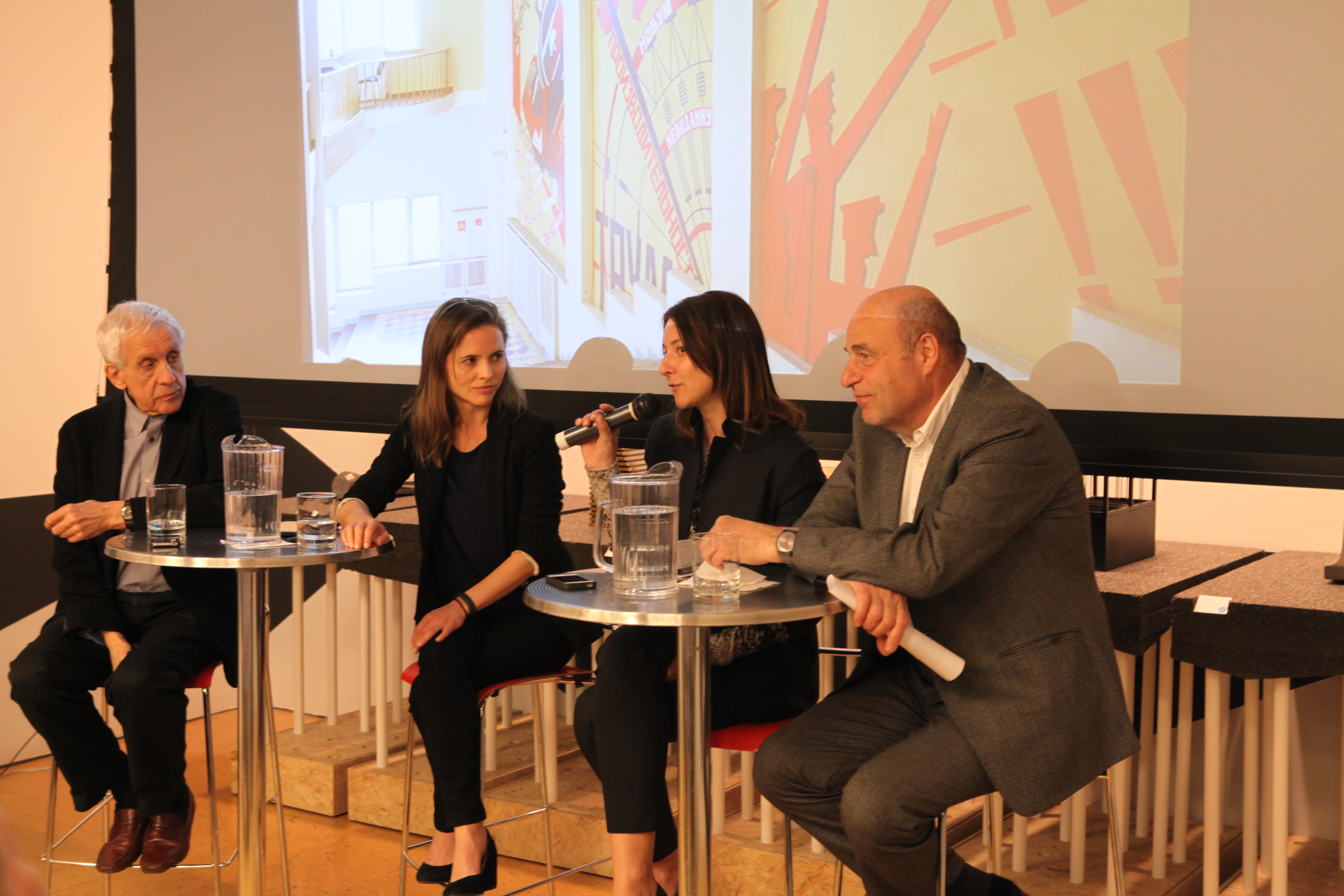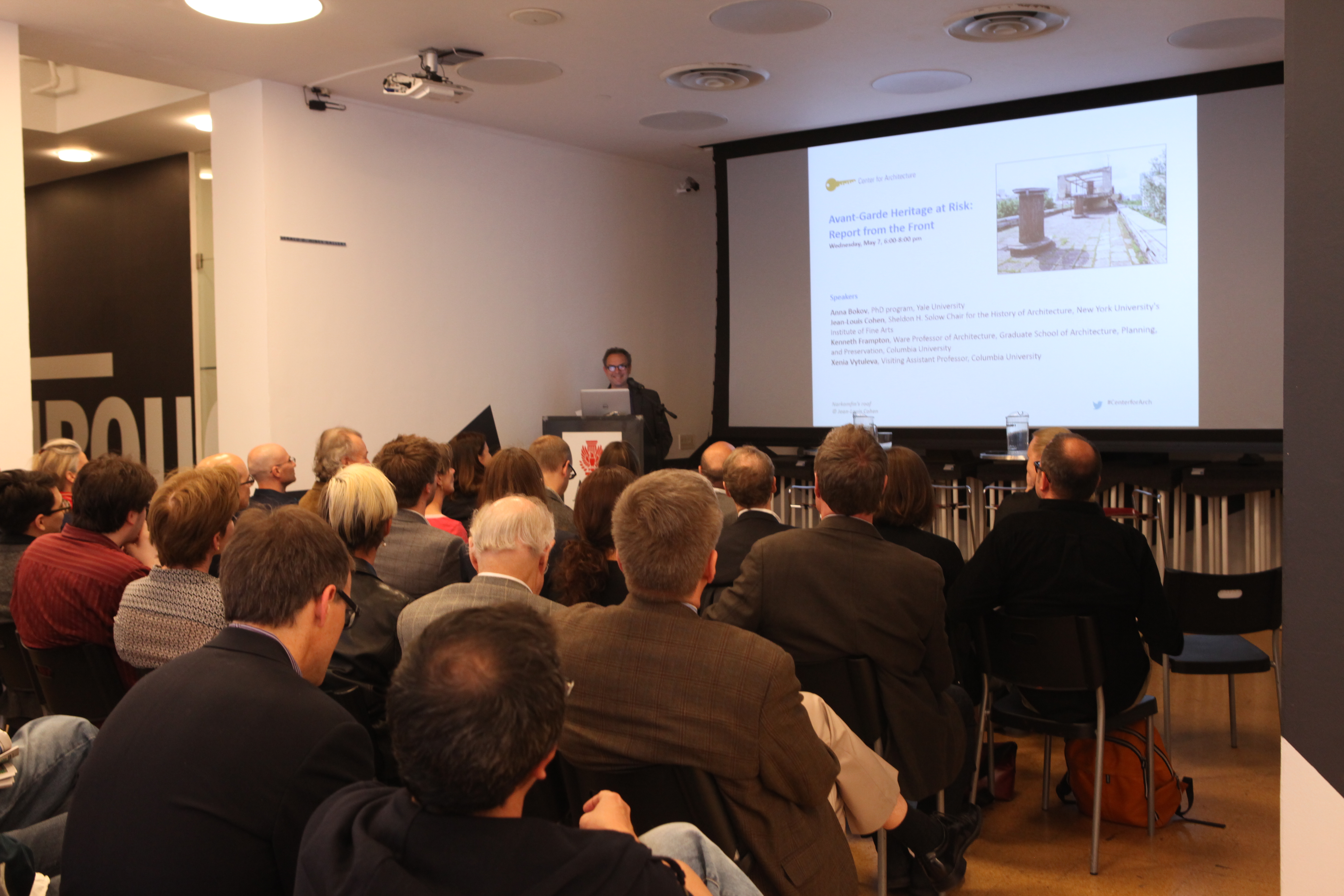by James Way
Recent calls to arms have raised awareness of impending doom, or at least major life transitions, for many modern landmarks, from the Orange County Government Center to a whole cadre of mid-century modern homes. Unfortunately, several have resulted in mourning the passing of Prentice Women’s Hospital, Mummers Theater, and the American Folk Art Museum. Abroad, the clock is ticking on Tokyo’s Nakagin Capsule Tower, and, as the “Avant-Garde Heritage at Risk” panel discussed, Moscow’s Constructivist landmarks are under threat as well.
Following Columbia University Ware Professor of Architecture Kenneth Frampton’s introduction to early 20th-century Russian architecture, Xenia Vytuleva, a visiting assistant professor at Columbia University, cited the imminent peril of several communal housing buildings. These include the prototypical Narkomfin by Moisey Ginzburg, which introduced double-height dwelling units and embraced Le Corbusier’s five points, and Ivan Nikolaev’s Communal House of the Textile Institute, with an innovative ventilation system that could distribute sleeping gas to ensure a good night’s sleep. Neglect and illegal renovations have, to varying degrees, stripped and gutted the projects. Jean-Louis Cohen, professor of architectural history at New York University, ironically called these restorations “an authentic replica, but not the building” as the historical structures become renovated modern apartments commanding high prices from the nouveau riche.
Another progressive typology that Anna Bokov of Yale University talked about are workers’ clubs. Konstantin Melnikov’s masterpiece, the Rusakov Workers’ Club is fairing well, even with imprecise restorations, but many others suffer disrepair. The destruction of factories and communal housing is removing the clubs’ context and reason for existence. As stopovers beween factory and home, the clubs provided a place for socializing, games, and the arts, and often built near churches as a spiritual surrogate. Bokov described the propagandist clubs as “machines for educating people.” Now, many have become stores.
Derelict historical structures fare similar fates – or even worse. Cohen showed that the revitalized Moscow Planetarium had been jacked-up on a chunky two-story plinth as a new museum. Another example of the era’s technological prowess is Vladimir Shukhov’s widely publicized radio tower, commonly referred to as the Shukhov Tower. Unfortunately, recent attention reflects an uncertain future. A zoning law allows development of a site to a height of pre-existing structures. The innovative Shukhov Tower, the first diagrid tower structure, provides the profitable condition enticing a developer to tear it down and build a 160-meter tall residential building.
One audience member asked the paradoxical question: “Is preservation antithetical to the spirit of the avant garde?” Squirming a little, the panel’s (and others in the audience) resounding answer was, “It’s ours now.” Hopefully Moscow will surpass the judicial ineffectiveness, economic incentivization, bureaucratic sluggishness, and politics that threaten these progressive, innovative national treasures of Russia’s fragile design heritage internationally recognized as a golden era of architectural advancement.
James Way, Assoc. AIA, Marketing Manager at Dattner Architects, frequently contributes to eOculus and studied for a semester at the Moscow Architectural Institute.
Event: Avant-Garde Heritage at Risk: Report from the Front
Location: Center for Architecture, 05.07.14
Speakers: Anna Bokov, Yale University; Jean-Louis Cohen, Sheldon H. Solow Chair for the History of Architecture, New York University’s Institute of Fine Arts; Kenneth Frampton, Ware Professor of Architecture, Graduate School of Architecture, Planning, and Preservation, Columbia University; and Xenia Vytuleva, Visiting Assistant Professor, Columbia University
Organized by: The Center for Architecture

